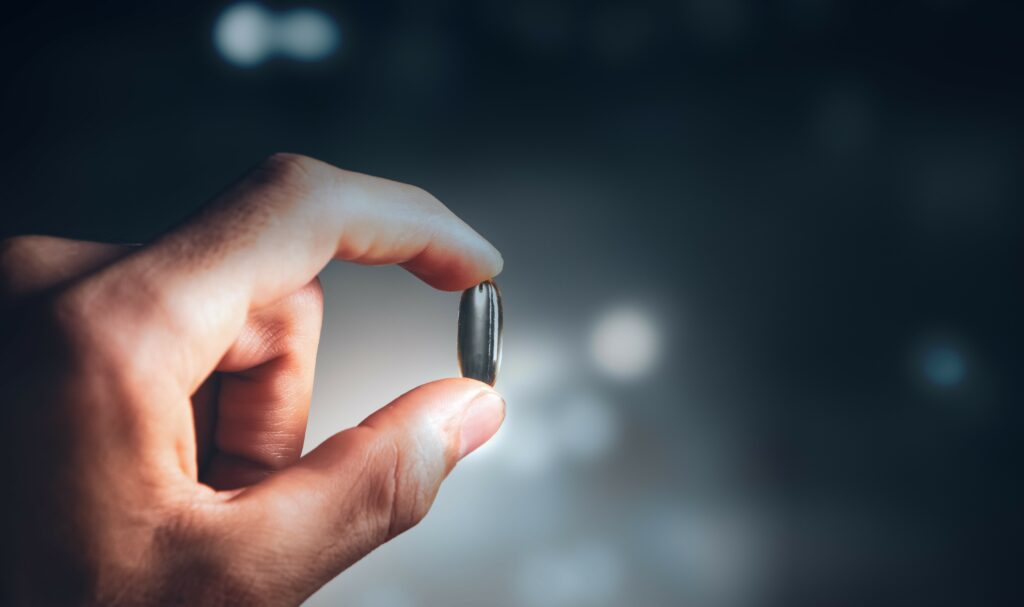When insulin-requiring patients with diabetes are seen in the clinic,there is usually a great emphasis placed on the type of insulin the patient is taking and an even greater emphasis on the amount. However, how much emphasis is placed on the practical aspects of insulin use? Which technique is the patient using to inject the insulin? Is he or she injecting it correctly? What sites are being used? Are the insulin syringes or pens being cared for properly? Are the needles being re-used?
When insulin-requiring patients with diabetes are seen in the clinic,there is usually a great emphasis placed on the type of insulin the patient is taking and an even greater emphasis on the amount. However, how much emphasis is placed on the practical aspects of insulin use? Which technique is the patient using to inject the insulin? Is he or she injecting it correctly? What sites are being used? Are the insulin syringes or pens being cared for properly? Are the needles being re-used? The patient might be on the right dose of the correct insulin, but if it is not being administered properly, optimal control will not be achieved. Thus, there is a need to teach the patient and then periodically review the practical aspects of insulin injections. Good injection practices have evolved over many years. Syringes were first invented in the 15th century in Italy, but their concept goes back to the time of Galen. It was not until 1844, however, that Francis Rynd developed the hollow needle. In 1853 the hypodermic needle and syringe were invented independently by the French surgeon Charles Gabriel Pravaz and the Scottish physician Alexander Wood. They were first used to inject morphine to relieve pain.1 The modern-day disposable nylon and polyethylene syringes first became available in the 1960s. They made injections much more convenient. Needles and syringes have been used to inject all forms of medication. Today millions of patients inject themselves with insulin each day. Some use the insulin syringe and others use the insulin pen, which became available in the 1980s.2 Over three billion needles, syringes, and lancets are used each year in the US alone by more than eight million patients who have diabetes.3 It is crucial that patients use them properly. Thus, there is a need in diabetes education not only to educate with regard to proper insulin administration, but also to review technique periodically, because over time some patients may stray from recommended practices and develop their own techniques, which are less than optimal and may even be harmful.4 The following factors should be considered when teaching or reviewing insulin injections with patients with diabetes.
Verification
Prior to the injection the patient must verify that the correct type and dose of insulin is being readied for injection. The insulin expiration date also needs to be checked at this time. The dates can vary significantly. The expiration date for insulin in pens or vials after being opened can be very different depending on the type of insulin. The limiting factor is not potency, as is commonly misunderstood, but rather sterility. After the recommended expiration date there is an increased possibility that the insulin is no longer sterile.5
Storage and Shipping
Prior to opening, insulin vials and pens should be refrigerated and not frozen. Insulin received via mail order must be adequately protected from extremes of temperature. If it becomes frozen, it should be discarded and never used. If insulin is shipped via mail order, one needs to confirm that it is being stored under the proper conditions.6 After opening, insulin vials can be either refrigerated or kept at room temperature. It is recommended, however, that insulin pens remain at room temperature once opened.7,8 Pens should not be stored with the needles on. If the needle is left on, air can enter the insulin cartridge and affect dosage delivery. Insulin syringes can be drawn up and stored in the refrigerator for up to one month, depending on the type of insulin.
When stored, they should be positioned with the needle up so that insulin does not deposit within the needle, resulting in clogging. For comfort, when injected the insulin should be at room temperature.
Injection Technique
In preparation for injection, the insulin pen should be primed with two units of insulin. This is then discarded and the actual dose dialed in. The same should be done with insulin syringes. If insulin is being mixed, however, the priming is performed with only the insulin that is drawn up from the first vial. For example, if 10 units of regular insulin are needed for the injection, 12 units should be drawn up. The syringe should then be held vertically with the needle pointing up. Any air bubbles are then expelled by a quick flick of the finger on the barrel of the syringe followed by expulsion of the two extra units of insulin. The goal is to inject just below the skin into the subcutaneous fat. Sites that are best for this include the abdomen, the backs of the upper arms, the upper buttocks or hips, and the outer portion of the thighs. Not all sites will be appropriate for all patients. For example, abdominal injections are not appropriate for patients who are thin, such as young children or well-muscled individuals who cannot pinch half an inch of fat. In these situations it is much more difficult to give the injection subcutaneously and there is a greater risk that the insulin will be injected intramuscularly.9 In one technique, after cleansing the skin with an alcohol swab, the fat is pinched between the thumb and index fingers and rotated slightly to ensure that muscle has not been gathered up. If muscle is injected, the injection will be more painful and the insulin will be absorbed faster, which could result in hypoglycemia.10 Shorter insulin needles have decreased the likelihood of intramuscular injections.11 Anecdotally, patients have employed the following painless insulin injection technique, which has not yet undergone formal investigation but is becoming more commonly used. The skin is first swabbed with alcohol. It is not pinched. Instead, the skin is touched lightly with the needle point until a spot is found that does not feel sharp. The needle is then slid through the skin at that spot at a 90º angle. Much like the roots of a tree, the nerve endings branch out on the surface of the skin. By inserting the needle between the ‘roots,’ a truly painless injection can be administered. When using an 8mm needle, the angle of the injection can vary depending on the area of the body being injected. A 90º angle is appropriate for areas of the body with more fat and a 45º angle with a pinch up for areas with less fat, thus avoiding intramuscular injection of insulin. The pinch up should be released prior to withdrawing the needle. If using a 5mm mini-pen needle no pinch up is necessary because the shorter needle cannot reach the muscle, except in very young children with very thin subcutaneous fat layers.11,12
The skin is the largest organ of the body, accounting for 15% of bodyweight.13 The thickness of the skin varies between 1 and 3mm throughout the body. Because there is no difference in skin thickness between obese and non-obese patients, obese patients are able to use the 5mm needles too.14 The average thickness of the subcutaneous fat layer in a normal-weight adult’s abdomen and thigh is listed in Table 1.15 The subcutaneous fat layer in the obese can vary but is significantly thicker than in normal-weight individuals.15
Injection Sites
Insulin is absorbed differently from different sites. It is absorbed most quickly from the abdomen, followed by the arms and then the legs. The slowest absorption is from the buttocks.16 It is advisable not to change sites daily because of the different rates of absorption.17 Better control can be achieved by consistently rotating insulin injections within a set area.18 For example, the morning injection could be given in one general area, with the noon injection in another, and the supper and bedtime doses in other areas, depending on how many injections are used per day. One could therefore inject a thigh in the morning and rotate around that thigh with the morning injections for a week, then move on to the other thigh for the next week. This would be preferable to injecting in the thigh on one morning and the abdomen on the next morning. Rotation is advisable within individual areas in order to prevent the formation of scars, fatty deposits, and hard lumps.19 These areas might be less painful to inject into, but this should be avoided because it can result in erratic insulin absorption, leading to marked glycemic excursions.20
Sites that should not be injected include an approximate two-inch circle around the umbilicus and near to moles and scars. The skin in such areas can be tougher and thus can contribute to variable rates of insulin absorption.4 It is also inadvisable to inject into areas that will be exercised, as this can cause an increased rate of absorption, resulting in hypoglycemia; for example, this could occur in someone using his or her right arm to play tennis. Injecting into the other arm or elsewhere would be preferable in this instance.4,21 After injecting, the site should not be massaged but rather light pressure should be applied to minimize bruising. If it appears that a significant amount of insulin has leaked out after the injection, the patient should monitor his or her blood sugar more closely afterwards.4
Needle Use and Re-use
As per US Food and Drug Administration (FDA) guidelines,22 insulin injection needles are sterile products and all must be labeled for single use only. In spite of most insurance plans covering them on this basis, some patients will re-use their needles anyway. Unfortunately, some healthcare providers will advise patients to do so.4 There are potential problems if this is carried out.
Needle Damage and Breakage
With improvements in technology, insulin needles have become progressively shorter and thinner. They are strong enough for one use but not repeated use.23 With re-use the thin tips of the needles can become damaged and bent and the silicone lubricant coating the needles is lost. The result is a more painful injection, with bruising and bleeding more likely to occur.24 Repeated use of the needle can result in it breaking off and lodging under the skin.25 If needles are re-used, insulin can deposit within the needle, making it harder to press on the plunger and deliver the proper dose of insulin. Insulin syringes need to be filled prior to use. Therefore, the syringe needles will pass through the rubber stoppers of insulin vials in order to draw up the insulin prior to being injected into the patient. Pen needles are not exposed to this trauma because the insulin pens are pre-filled.
Contamination
Although sterility is guaranteed with the first use of the syringe and pen needles, the potential for contamination increases with repeated use. One study showed biological material was trapped in the pen needles or cartridges of 62% of patients after injection.26 Bacteriostatic agents are added to most insulins to stop bacterial growth; however, needle re-use can increase the risk of infection.27
Infections caused by contamination from needle re-use can be severe. Some infections can even be life-threatening, as for example in the reported case of a perinephric abscess due to insulin syringe re-use.28 Those patients who have compromised immune systems are likely to be at a higher risk for such infections, as are those with infected skin lesions who do not practice good hygiene.4 Some patients, in an attempt to be hygienic, will clean the needle with alcohol prior to re-using it.Doing so, however, will remove the silicone lubricant, which will result in a more painful injection.23
Dosage Accuracy
Insulin pen delivery systems are extremely accurate when used properly.29 If the needles are left on the pens after use, however, air can pass through them into the insulin chamber. Not only can this increase the chance of contamination, it can also affect dosage accuracy due to air bubble formation. The excess air reduces ‘the delivery of insulin in the five seconds that patients normally wait’ when using their insulin pen.30 According to this study, if a pen were to have 200μl of air in it, a patient would receive only 37% of his or her dose. Thus, a patient who intended to take 20 units of insulin would receive only 7.4 units if the needle was withdrawn after the standard five-second wait. This is why manufacturers recommend removing insulin pen needles immediately after use. In light of this it is also reasonable to have patients wait 10 seconds rather than five if they are injecting more than 25 units of insulin with a 30-gauge or smaller needle.
Lipohypertrophy, Lipodystrophy, and Lipoatrophy
Lipohypertrophy is the most common local complication of insulin use. It presents as ‘grape-like’ lumps of excessive fat at insulin injection sites. The factors that were found to be statistically relevent to the incidence of lipohypertrophy include needle change frequency, change of site frequency, and duration of insulin use (see Table 2).31
The re-use and repeated use of insulin needles causes damage to their tips and a loss of the silicone lubricant, resulting in damage to the tissue by the injections and an increased likelihood of lipohypertrophy occurring. Lipohypertrophy was noted to occur least in patients who rotated their injection sites weekly (see Table 2). These findings suggest that the form of rotation is important. By rotating properly among injection sites it will be weeks before the patient returns to the original site. During this time the site will be free from the growthpromoting effects of insulin, resulting in a lower incidence of lipohypertrophy. Unfortunately, patients tend to repeatedly inject at sites of lipohypertrophy because it is less painful to do so. This in turn further exacerbates the problem.31
Lipodystrophy—scarring of the fat—is thought to be secondary to the trauma caused by needle re-use and also to giving repeated insulin injections at the same site.31 To minimize lipohypertrophy and lipodystrophy, needles should not be re-used and injection sites should be rotated correctly. Lipoatrophy is manifested by a loss of subcutaneous fat. In some patients it has been associated with impure insulins and presents as a depression in the skin. Checks should be made for any signs of lipohypertrophy, lipodystrophy, and lipoatrophy during routine examinations of patients with diabetes. Once identified, corrective action should be initiated.31
Trypanophobia
Trypanophobia is more commonly known as ‘needle phobia.’ Despite numerous advances in the technology of insulin syringes and pens, there are still patients who are reluctant to take insulin injections. For a brief period when inhaled insulins were on the market, such patients could be placed on these alternatives. Such insulins are no longer available, thus the issue of ‘needle phobia’ needs to be addressed.
One or more of the following factors is often involved in a patient’s needle phobia:
• a perceived loss of control over his/her life;
• a lack of confidence that he/she could handle the demands of insulin therapy;
• a belief that insulin therapy equates to a personal failure;
• a perception that the diabetes has become much worse;
• injection-related anxiety; and
• a perceived lack of personal gain.32
Fortunately, these matters can be successfully addressed by appropriate interventions. First, the patient’s ‘personal obstacles’ need to be identified and acknowledged. The patient’s sense of personal control needs to be re-established. Introducing insulin therapy as a brief trial in which the patient is told that he/she can opt to continue or not at its end can help to rebuild a sense of control. Once insulin has been started, it is important to follow up expeditiously on dose adjustments. If adjustments are not made until a future visit a month or more away, the perceived advantages of insulin therapy may not be as apparent and the patient might become reluctant to continue. For those patients who are truly fearful of needles, referral to a psychologist or psychiatrist proficient in cognitive behavioral therapy for ‘systematic desensitization’ can often quickly resolve the issue.32
Disposal of Sharps
Healthcare workers are not the only ones at risk of sharps injuries. People at high risk of being stuck by used sharps include children, janitors, housekeepers, sanitation and sewage treatment workers, and workers at recycling facilities and landfills.3 As part of their initial training in proper insulin injection techniques, therefore, patients should be taught how to safely dispose of sharps. The laws vary by state. The Centers for Disease Control and Prevention provide helpful information regarding proper disposal and the various states’ regulations. Another very helpful organization in this regard is the Coalition for Safe Community Needle Disposal (at www.safeneedledisposal.org). Various programs are available to address this problem. Some even include a mail-back option. Syringes, pen needles, and lancets are not recyclable and should therefore never be placed in a recycling bin.
Disasters of Nature and Man
Not taking insulin can be life-threatening for patients with type 1 diabetes. Therefore, a disaster plan needs to be prepared in advance for them. If disaster strikes, how will they be able to continue taking their insulin injections? This should be included as an integral part of their diabetes education.33 The US and other countries are currently at war. There is therefore a risk that the standard distribution network of medical supplies could suddenly be disrupted by an act of war. Supplies could also be disrupted in the event of a major earthquake or hurricane. If such events were to occur, the patient would need to rely on him- or herself for a period of time.
The American Association of Clinical Endocrinologists therefore recommends that the patient make a portable diabetes disaster kit that is both insulated and waterproof.33 If the patient is on insulin, the kit should contain at least a 30-day supply of insulin syringes and insulin vials or insulin pens and needles, along with cold packs. It should also contain blood testing supplies including lancets, test strips, and a glucose meter (preferably two) with extra batteries. Do not forget to advise that a sharps container be included for disposal of the lancets and needles. At least a three-day supply of non-perishable food and bottled water is also recommended. The kit should be personalized for each patient and kept in a handy spot ready to go.33
Conclusion
Diabetes education, especially in terms of proper insulin injection techniques, takes a great deal of time and effort. Without it, however, the right type of insulin at the right dose might not necessarily give the right results. As a consequence, marked glycemic excursions could occur and optimal blood sugar control could prove to be elusive.
The Importance of Good Insulin Injection Practices in Diabetes Management
Abstract
Overview
Abstract
Time constraints are often significant when treating patients with diabetes with insulin. In such settings, focus is often placed on the type of insulin the patient is taking, with an even greater emphasis placed on the amount. However, how much emphasis is placed on the practical aspects of insulin use? Is the patient using proper injection techniques? Are the insulin syringes or pens being cared for correctly? Are needles being quietly re-used without the medical staff’s knowledge? Are sharps being disposed of safely? Diabetes education regarding the proper use of insulin takes much time and effort. Without it, however, the appropriate type of insulin at the correct dose might not necessarily give the intended outcome. Instead, marked glycemic excursions could occur, leaving the goal of good diabetes control unachievable and the medical staff baffled.
Keywords
Diabetes, insulin, injection technique, insulin pens, insulin syringes, insulin needle re-use, patient education
Disclosure: Richard Dolinar, MD, is a member of the speakers’ bureaus of Amylin, Eli Lilly, and Takeda and a consultant for BD Medical and Pfizer.
Received: October 22, 2009 Accepted: December 2, 2009
Correspondence: Richard Dolinar, MD, Arizona Endocrinology Center, 5130 W. Thunderbird Road, Suite 1, Phoenix, AZ 85306. E: drdolinar@dolinar.org
Article
References
- Lawrence G, Lancet, 2002;359:1074.
- Anonymous, Lancet, 1989;333(8633):307–8.
- US Environmental Protection Agency, Available at: www.epa.gov/osw/nonhaz/industrial/medical/med-govt.pdf (accessed November 26, 2009).
- American Diabetes Association, Available at: care.diabetesjournals.org/content/26/suppl_1/s121.full (accessed November 26, 2009).
- Committee for Proprietary Medicinal Products.
- Wisconsin Department of Health Services.
- New Jersey Department of Health and Senior Services, Available at: www.state.nj.us/health/healthfacilities/ documents/ltc/insulin_qa.pdf (accessed November 26, 2009).
- Lilly, Available at: www.lillydiabetes.com/content/insulinstorage. jsp (accessed November 26, 2009).
- Anonymous, Diabetes Educator, 2004;30(2):174–82.
- Karges B, Boehm BO, Karges W, Diabet Med, 2005;22(10):1444–5.
- Tubiana-Rufi N, Belarbi N, Du Pasquier-Fediaevsky, et al., Diabetes Care, 1999;22:1621–5.
- Strauss K, Hannet I, McGonigle J, et al., Practical Diabetes International, 1999;16(7):218–22.
- Anonymous, Available at: human.freescience.org/htmx/ skin.php (accessed November 26, 2009).
- Kreugel G, Keers JC, Jongbloed A, et al., American Diabetes Association, 69th Scientific Sessions, 2009, New Orleans, Louisianna, June 5–9, 2009; 440—poster presentation.
- Kellaher S.
- Bantle JP, Neal L, Frankamp LM, Diabetes Care, 1993;16(12):1592–7.
- Bantle JP, Weber MS, Rao SM, et al., JAMA, 1990;263(13):1802–6.
- Lumber T, Diabetes Forecast, 2004;57(7):68–70.
- Hauner H, Stockamp B, Haastert B, Exp Clin Endocrinol Diabetes, 1996;104(2):106–10.
- Hambridge K, Br J Nurs, 2007;16(9):520–24.
- Süsstrunk H, Morell B, Ziegler WH, et al., Diabetologia, 1982;22(3):171–4.
- US Food and Drug Administration, Available at: www.FDA. gov/medicaldevices/deviceregulationandguidance/guidance documents/ucm081324.htm (accessed November 26, 2009).
- Peragallo-Dittko V, Available at: www.diabetesdigest.com/ dd_other_topics16.htm (accessed November 26, 2009).
- Chantelau E, Lee DM, Hermmann DM, et al., BMJ, 1991:303:26–7.
- Sood A, Miglani S, Moorthy D, J Pediatr Endocrinol Metab, 2001;14(1):101–2.
- Le Floch JP, Lange F, Herbreteau C, et al., Diabetes Care, 1998;21(9):1502–4.
- Paily R, Am J Med Sci, 2004; 327(1):47–8.
- Rissler J, Jorgensen C, Rye Hansen M, et al., Expert Opin Pharmacother, 2008;9(13):2217–22.
- Ginsberg BH, Parkes JL, Sparacino C, Horm Metab Res, 1994;26:584–7.
- Vardar B, Kizilci S, Diabetes Res Clin Pract, 2007;77(2):231–6.
- Polonsky WH, Jackson RA, Clinical Diabetes, 2004;22(3):147–50.
- American College of Endocrinology. Available at: www.aace.com/DPcard_LoRespdf.pdf (accessed November 26, 2009).
Further Resources

Trending Topic
We are pleased to present the latest issue of touchREVIEWS in Endocrinology, which offers a timely and thoughtprovoking collection of articles that reflect both the continuity and evolution of diabetes and metabolic disease research. In an era where technology, public health priorities and clinical paradigms are shifting rapidly, this issue highlights the importance of evidence-based […]
Related Content in Diabetes

Coronavirus disease 2019 (COVID-19) is a life-threatening infection caused by severe acute respiratory syndrome coronavirus 2 (SARS-CoV-2).1 Diabetes mellitus is one of the most frequent comorbidities, related to hospitalization due to SARS-CoV-2 infection, as well as a risk factor for disease severity, ...

Diabetes is a chronic disease associated with both acute and chronic complications. Many advances have been introduced throughout history to address these problems. While each clinical breakthrough was welcomed with relief and the expectation that a solution had been discovered, ...

Article Highlights Early use of sodium–glucose co-transporter-2 inhibitors following myocardial infarction was associated with the following factors: Lower hospitalization for heart failure (odds ratio [OR]: 0.75; 95% confidence interval [CI]: 0.62–0.90; p=0.002). Similar cardiovascular deaths (OR: 1.04; 95% CI: 0.83–1.30; p=0.76). Similar all-cause mortality (OR: 1.00; 95% ...

Very few trials in the history of medical science have altered the treatment landscape as profoundly as the UK Prospective Diabetes Study (UKPDS). Even 44 years after its inception, the trial and post-study follow-up findings continue to fascinate and enlighten the ...

It is with great pleasure that we present this latest issue of touchREVIEWS in Endocrinology, which brings together a diverse array of high-quality articles focused on the evolving landscape of endocrine disorders. The importance of patient-centred care is exemplified in ...

Dry eye disease (DED) is known as dry eye syndrome (DES) or keratoconjunctivitis sicca. According to the Tear Film and Ocular Surface Society’s Dry Eye Workshop II (TFOS DEWS II), it constitutes a multifactorial disease of the ocular surface, ...

The prevalence of diabetes during pregnancy is rapidly increasing. In the USA alone, an estimated 1–2% of pregnant women have type 1 diabetes (T1D) or type 2 diabetes (T2D), and an additional 6–9% develop gestational diabetes.1 From 2000 to 2010, the prevalence of gestational ...

Dipeptidyl peptidase-4 (DPP-4) is a ubiquitous, multifunctional, 766-amino acid, type 2 transmembrane glycoprotein, which participates in the regulation of metabolic functions, immune and inflammatory responses, cancer growth and cell adhesion.1 It has two forms: the first is a membrane-bound form, which ...

Metformin Metformin has been recommended as the first-line glucose-lowering agent for the management of type 2 diabetes (T2D) for several decades due to its efficacy and safety profile.1–3 In fact, metformin has been widely used as an insulin-sensitizing agent for ...

Welcome to the latest edition of touchREVIEWS in Endocrinology, which features a range of review, case report and original research articles that highlight some key developments in our understanding and management of endocrinological disease. We begin with a commentary from ...

Type 2 diabetes (T2D) continues to pose an ever-greater global health challenge, with 1.31 billion individuals predicted to be living with diabetes globally by 2050; the majority of whom will have T2D.1 Closely linked to T2D is metabolic dysfunction-associated steatotic ...

Gestational diabetes mellitus (GDM) is generally defined as “any degree of glucose tolerance with onset or first recognition during pregnancy”.1 It currently is one of the diseases with the highest morbidity among pregnant women.2 Determining its prevalence has been a ...
Latest articles videos and clinical updates - straight to your inbox
Log into your Touch Account
Earn and track your CME credits on the go, save articles for later, and follow the latest congress coverage.
Register now for FREE Access
Register for free to hear about the latest expert-led education, peer-reviewed articles, conference highlights, and innovative CME activities.
Sign up with an Email
Or use a Social Account.
This Functionality is for
Members Only
Explore the latest in medical education and stay current in your field. Create a free account to track your learning.

